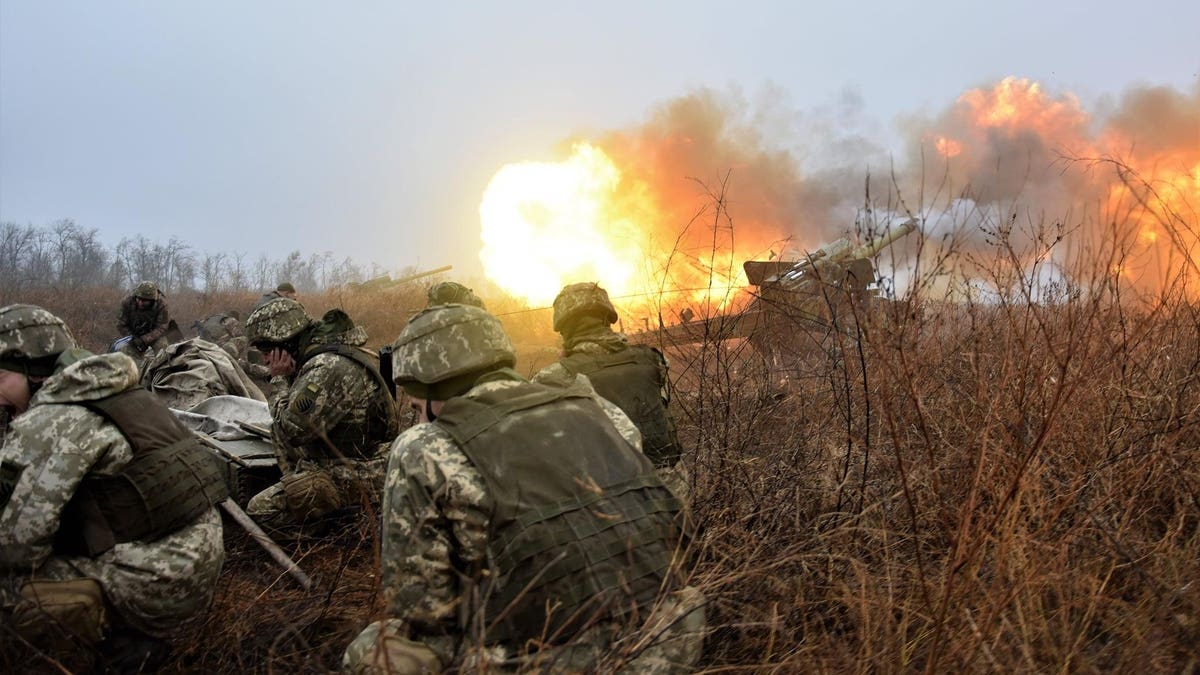American-made cluster shells have reached Ukrainian artillery batteries on the front line of Russia’s 17-month-old wider war on Ukraine.
If videos from the front are any indication, the Ukrainians are using the devastating dual-purpose improved conventional munitions, or DPICM, exactly the way the U.S. Army intended: firing a high-explosive shell as a test—then letting fly a DPICM shell that scatters 88 grenade-size submunitions over an area potentially greater than a football field.
Carefully watch the infrared video that a drone from the Ukrainian air-assault force’s 79th Brigade recorded on or before Thursday. The drone focuses its camera on a gap in a treeline in southern Donetsk Oblast, where Ukrainian forces have been on the attack as part of Kyiv’s wider counteroffensive that began on June 4.
Russian infantry, visible as hot white figures, scamper across the gap in the infrared video. Ideal fodder for a DPICM round, which is “highly effective and reliable artillery capability to engage area targets,” according to U.S. Secretary of State Antony Blinken.
A Ukrainian high-explosive shell, possibly fired by an M-777 howitzer battery with the nearby 55th Artillery Brigade, bursts at the edge of the gap. It’s this explosion—triggered by the round’s impact with the ground—that the battery apparently used to determine the fuze settings for the DPICM round it fired next.
A 103-pound M483A1 DPICM round pops open and expels its submunitions—each “capable of penetrating more than 2.5 inches of rolled homogeneous armor [or] incapacitating personnel,” according to a U.S. Army field manual—over an area that varies according to the round’s altitude at the moment of expulsion.
It’s critical to get the altitude right, which means knowing exactly how high the ground is, which begs for a high-explosive, or HE, test shot to precede the DPICM round.
That’s precisely what the U.S. Army prescribes in its field manual. “For adjust-fire missions, HE should be fired in the adjust phase whenever feasible in order to conserve M483A1 ammunition,” the manual states.
Having fired their high-explosive test round, the Ukrainian gunners in action in the recent IR video then shot their DPICM round. The shell opened up tens or scores of feet over the gap in the treeline.
The submunitions peppered the fields and trees—and any Russians still in the area. The Ukrainian army claimed the fire mission killed a popular Russian military blogger named Mikhail Luchin.
American DPICM rounds reached the front just a few days or weeks ago—and the Russians already are hip to the Ukrainians’ “HE-then-DPICM” tactic.
Ukrainian batteries “use a strike on the location as bait and then hit the same place with cluster munitions again,” one Russian blogger moaned in the caption underneath a photo presumably depicting the aftermatch of a DPICM strike: a Russian soldier’s body armor with several holes in it.
Read the full article here





